Monterey Bay Aquarium changes standards regarding use of plastics
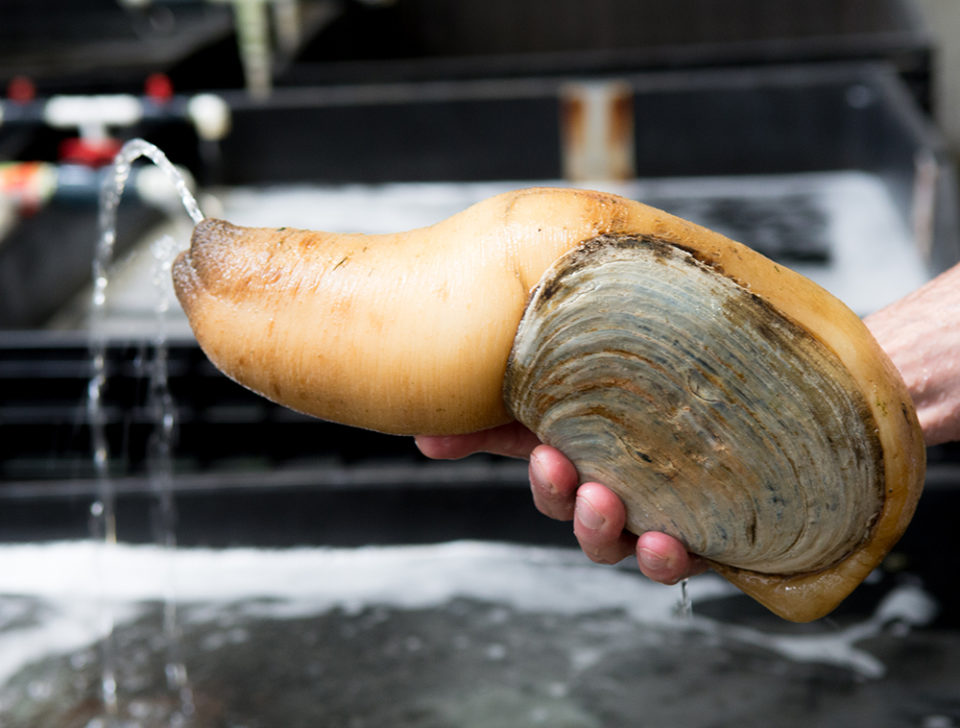
In December, the Monterey Bay Aquarium’s influential Seafood Watch program downgraded Pacific geoducks farmed in Washington state and British Columbia from a green, best-choice to a yellow, good-alternative rating. The change surprised and confused many in the field, since it’s a segment of the industry generally considered extremely sensitive to sustainability issues.
However, most people close to the industry – including Seafood Watch itself – doubt that sales of the giant clam will register any change in light of the new rating.
As geoduck farming in Washington state has grown – from almost non-existent in 2000 to exporting $92 million worth of product in 2015 – studies and accreditations like that of Seafood Watch have mostly recognized it as a sustainable, environmentally conscious industry.
It’s still a good choice. As long as we’re not in red, consumers still feel good about purchasing geoducks.
The Seafood Watch report downgraded geoduck in from green to yellow in just three categories – effluent, escapes and wildlife mortalities – but it was enough to move the needle on the overall score.
“It is largely a result of how they do the assessment,” said Bill Dewey, spokesman for the largest farmed shellfish producer in the United States, Taylor Shellfish, on what drove the change.
Ryan Bigelow, the program engagement manager at Monterey Bay Aquarium, admitted that’s basically true. In the effluent category, Seafood Watch hadn’t included plastics before, but did in this report. In escapes, he explained that they just had more data for this report than previously. The wildlife mortality scores changed because Seafood Watch now takes into account the mortality of intertidal organisms.
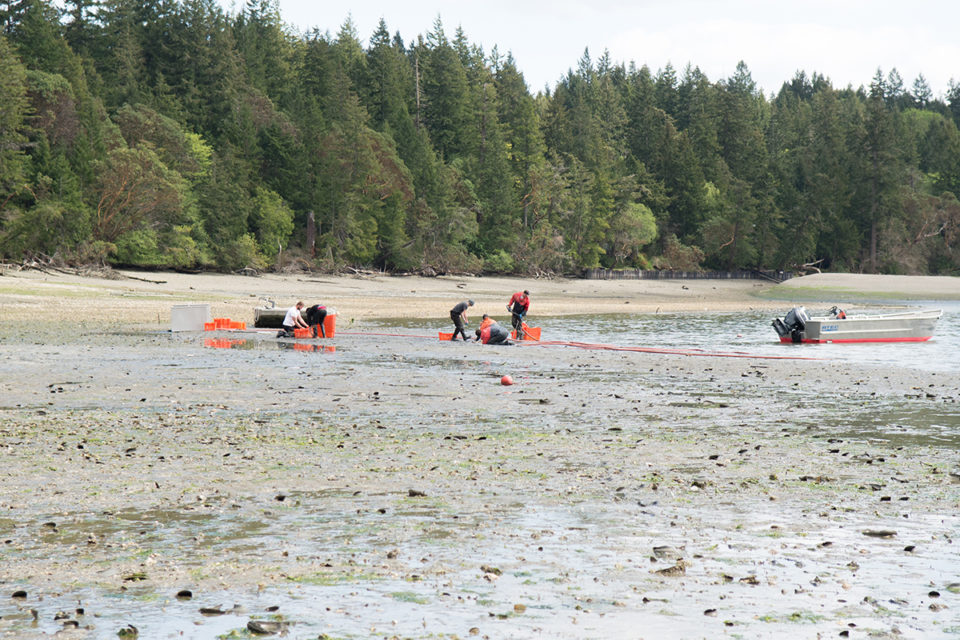
A new focus on plastics
The biggest issue – and where much of the industry’s sustainability focus already lay – is on the use of plastics, particularly on debris and microplastics. But even in that regard, the report is somewhat wishy-washy, stating that the impacts are “not well understood,” and basing the score partially on that uncertainty.
Dewey contests this, saying the plastics they use are very hard and don’t contribute to the microplastic issue and that the local industry’s cooperative efforts have turned up very little debris; any that did turn up was tracked and the issue investigated.
“We think, on plastics, particularly, they missed the mark and didn’t have all the current information,” he said. Even so, Dewey explained that Taylor and others are already moving away from the plastic tubes that were of concern and toward mesh tubes that are the same material as used for oyster bags.
“We respect what they do,” Dewey said, noting that they long worked with Seafood Watch on geoducks, though didn’t have time to participate when invited on this particular review.
Despite the flurry of activity surrounding the rating change, Dewey doubts that Taylor Shellfish will see any change in sales. “It’s still a good choice. As long as we’re not in red, consumers still feel good about purchasing geoducks.” And, he points out, while Taylor only exports about half their geoducks to Asia, about 90 percent of the industry is focused there and, “The Asian side probably pays less attention.”
Bigelow agreed that there would likely be little impact from this change, noting that they still encourage partners to buy product that’s earned a yellow rating. He also admits that this report wasn’t a matter of the industry changing for the worse, but rather that the standard and methods had been updated. For example, on the topic of escapes, he said, echoing the report, “Best management is in place, but even best management isn’t going to cover it.”
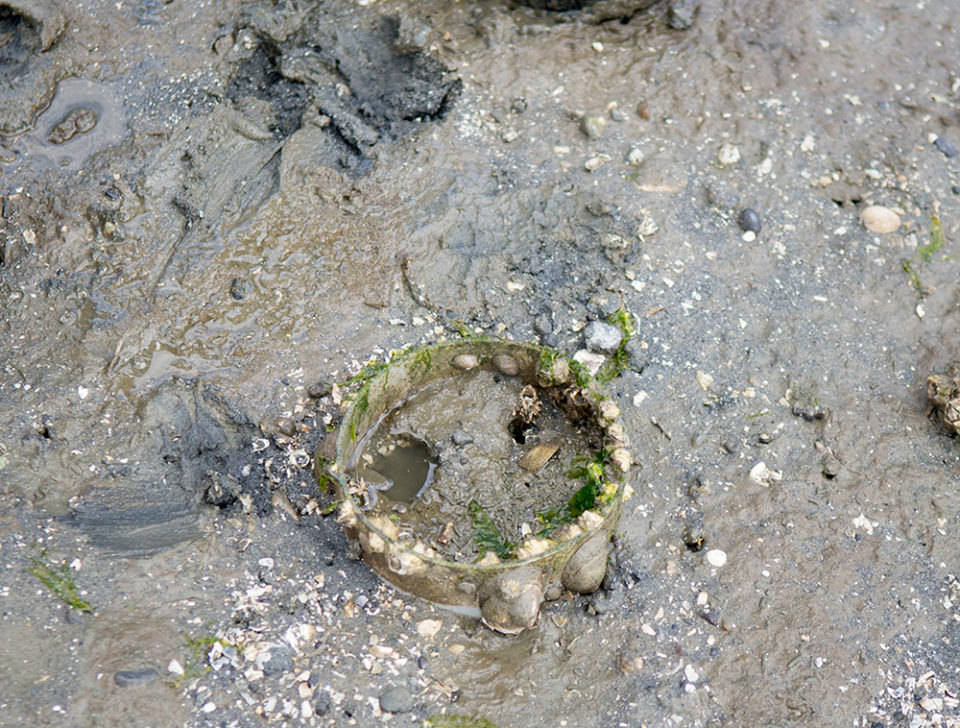
Farming techniques constantly evolve
Sean McDonald, who has been researching the ecological impact of aquaculture on geoducks since 2008 at the University of Washington, also admitted surprise regarding the change. His work was used in the study – though not in the categories in which geoducks were downgraded. While he doesn’t think that the people who consume geoducks are likely to take notice of the change, he was more surprised at the standards change.
“It’s interesting that now that we have more information that largely doesn’t show negative impact, now the score is lower,” he said.
Part of McDonald’s work models potential outcomes, but he worries sometimes their models are misinterpreted to point to terrible facts. To the contrary, he said, he’s found that the industry “is always looking for alternative techniques that allow them to meet higher standards,” he said. “It’s a group of people that is passionate about what they do. Overall they legitimately care about work they’re doing and want to be good stewards.”
Commercial geoduck farming is a young industry – Taylor was one of the first to do it in the Northwest, beginning in 1991 – and much of the definition of standards and rapidly changing techniques are part of growing pains as it adapts to research and progress. But Dewey backs up McDonald’s observations on the industry, saying “Any time science has shown there’s a more sustainable way, we’ve changed.”
That change and progressiveness is part of what has grown geoduck exports from negligible at the turn of the millennium to what’s soon to become a $100 million industry.
Author
-
Naomi Tomky
Naomi Tomky is the world’s most enthusiastic eater of everything. She writes about food and travel from her Seattle home.
Tagged With
Related Posts
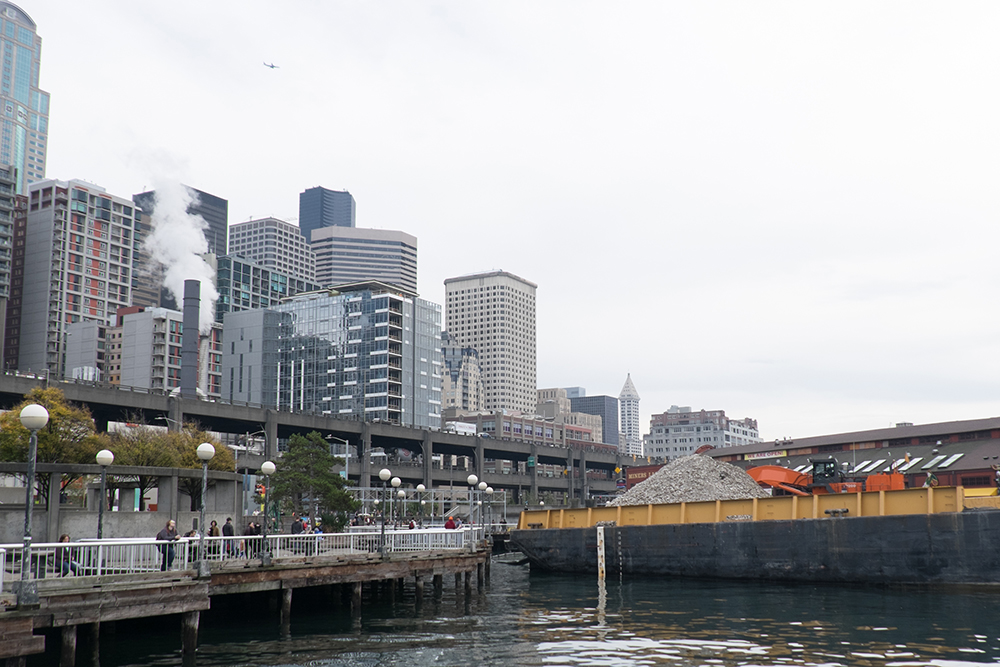
Innovation & Investment
We built this city on oyster shells
When Seattle decided to rebuild the seawall separating its waterfront from Puget Sound, it turned to a bivalve byproduct for a unique, environmentally friendly material for an hospitable marine habitat. The city wanted its design and materials as pragmatic and beneficial for its underwater residents as for those using the parks, paths and services above ground.
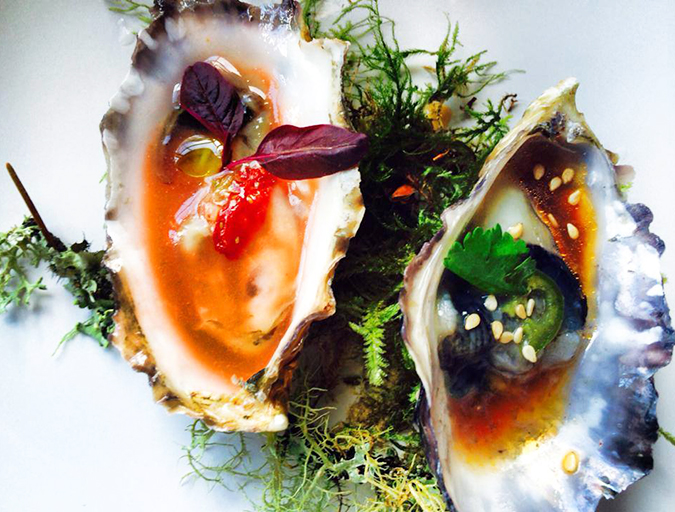
Intelligence
Cup size matters, but for oysters, branding matters more
To name an oyster is to give birth to a brand, essential to stand out in today’s raw bar scene. The briny bite-sized morsels are arguably seafood’s sexiest offerings, but a memorable moniker (and a quality product) is what keeps them on the menu.
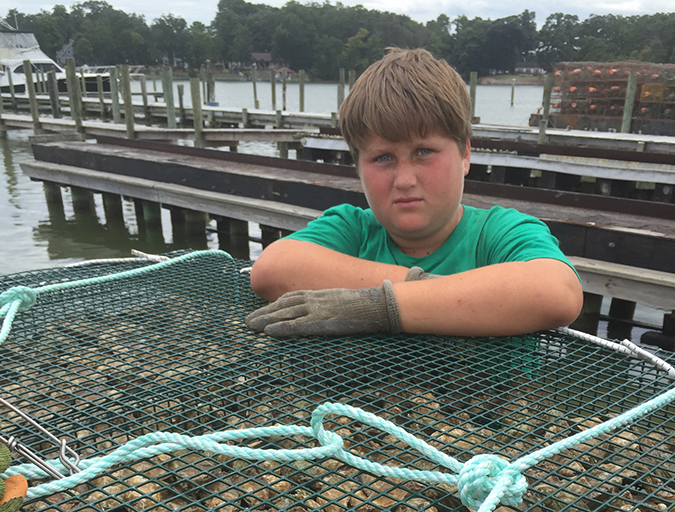
Responsibility
Ailing waterways hail the oyster’s return
The Lower Hudson Estuary and Chesapeake Bay, two waterways once home to thriving oyster beds, would welcome the shellfish’s return. Aquaculture initiatives in both areas aim to reinvigorate the water and the communities they support.
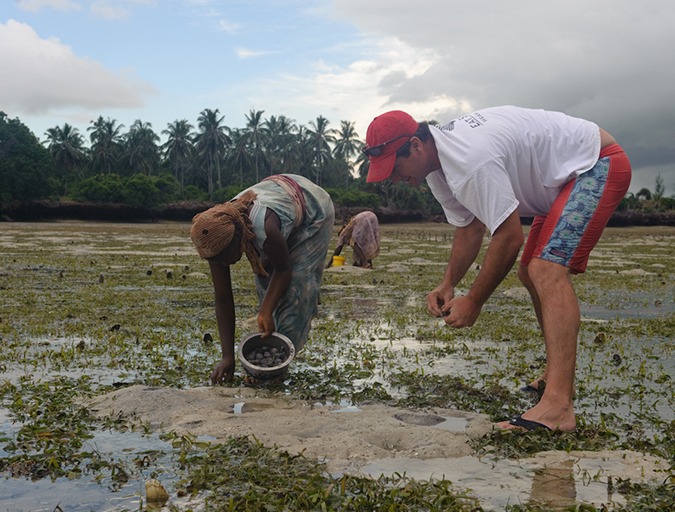
Responsibility
Social oysters: Aquaculture inspiring communities
Two New England shellfish producers are furthering their innovative social license initiatives, both in their hometowns and in food-insecure regions overseas. Island Creek Oysters and Matunuck Oyster Farm have become admirable aquaculture ambassadors.


